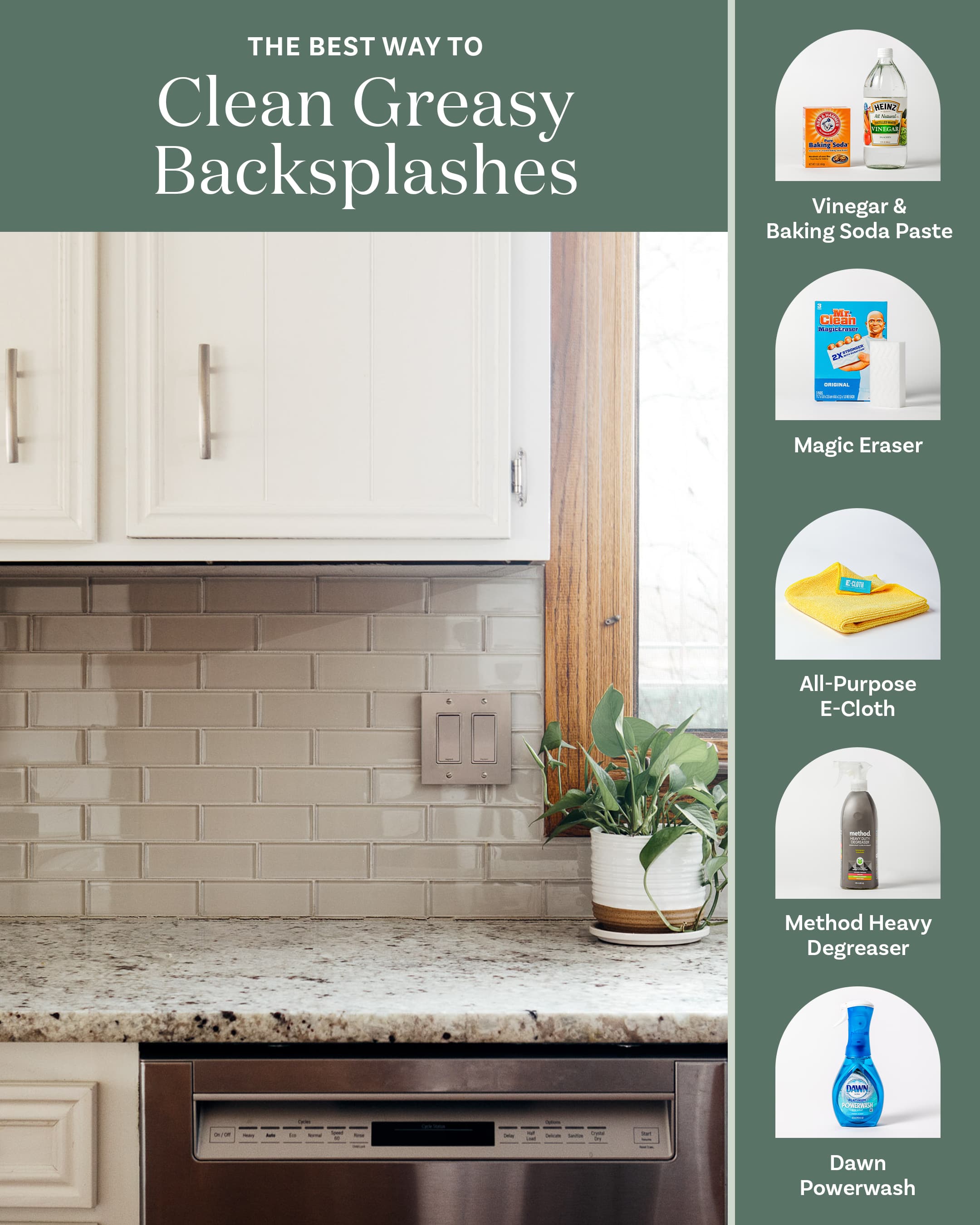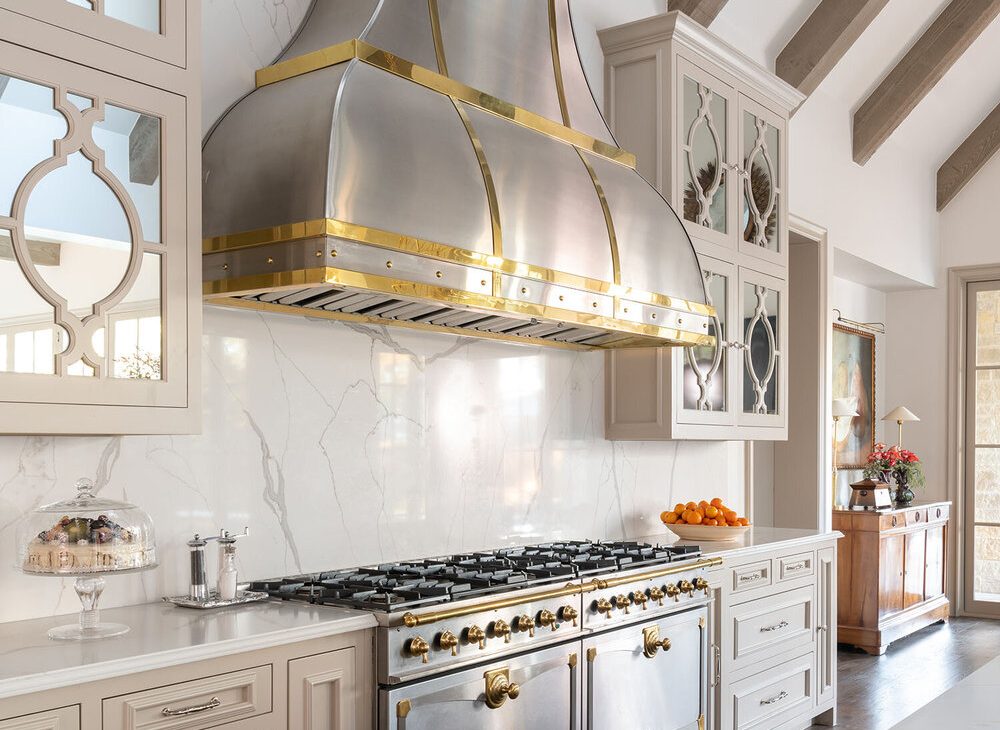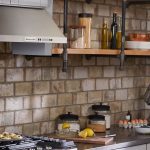To measure for a range hood, first measure the width of your cooktop, then add extra space on each side for clearance. Measure the depth by ensuring the hood will not interfere with cabinet doors or other obstacles.
Measure the height by considering the recommended distance between the cooktop and the hood. Once you have these measurements, you can find a range hood that fits perfectly in your kitchen. Range hoods are essential appliances that help keep your kitchen clean and free from odors, smoke, and grease.
However, finding the right size hood for your cooktop can be a challenge. This guide will walk you through the steps to accurately measure for a range hood, ensuring a proper fit and optimal ventilation in your kitchen. By following these simple steps, you can easily determine the right dimensions for your range hood and make an informed purchase decision. So, let’s get started!

Credit: www.thekitchn.com
Understanding The Importance Of Proper Measurement
Accurate measurements are crucial when it comes to installing a range hood in your kitchen. Proper measurement ensures that the range hood fits perfectly and functions efficiently, providing effective ventilation. Additionally, incorrect measurements can negatively impact the overall aesthetic of your kitchen, affecting its visual appeal.
Let’s delve deeper into the reasons why precise measurements are essential for range hood installation.
Why Accurate Measurements Are Crucial For Range Hood Installation:
- Proper fit: Accurate measurements enable you to choose a range hood that fits seamlessly within the allotted space above your stove. A well-fitted range hood ensures optimal functioning and prevents any potential complications during installation.
- Effective ventilation: The primary purpose of a range hood is to remove smoke, steam, and other cooking odors from your kitchen. With accurate measurements, you can select a range hood with the appropriate size and capacity to effectively remove airborne pollutants, ensuring a clean and healthy cooking environment.
- Safety: Installing a range hood that is too large or too small for your kitchen can lead to safety hazards. An oversized range hood may pose a risk of head injury, while an undersized one might not effectively capture all the smoke and fumes. Precise measurements help ensure the range hood is installed at a safe and functional height.
How Improper Measurements Can Lead To Inefficient Ventilation:
- Inadequate capture area: Improper measurements may result in a range hood that doesn’t cover the entire cooking surface, leaving areas without proper ventilation. This can lead to inefficient removal of smoke, grease, and odors, compromising indoor air quality and increasing the chances of lingering cooking smells.
- Reduced suction power: Choosing a range hood that is too small for your kitchen can affect its suction power. Inadequate suction power means the range hood will struggle to effectively capture and exhaust the airborne particles produced during cooking, reducing its overall efficiency.
- Increased noise levels: Improper measurements can result in a range hood that is either too close or too far from the stovetop. This can lead to increased noise levels during operation as the ventilation system works harder to compensate for the incorrect distance, potentially disrupting your cooking experience.
The Impact Of Incorrect Measurements On The Overall Aesthetic Of The Kitchen:
- Imbalanced proportions: Installing a range hood that is disproportionate to the rest of your kitchen can disrupt the overall aesthetic appeal. A poorly measured range hood can make the kitchen feel visually unbalanced, detracting from the cohesive design and style you’ve worked hard to achieve.
- Visible gaps or overlaps: A range hood that doesn’t fit correctly can result in unsightly gaps or overlaps between the hood and surrounding cabinets or walls. These visual imperfections can significantly diminish the overall aesthetic, making your kitchen appear unfinished or poorly designed.
- Mismatched styles: Incorrect measurements may force you to choose a range hood that doesn’t align with your desired kitchen style. It’s important to consider the dimensions and design of the range hood to ensure it complements the existing kitchen elements and enhances the overall visual appeal.
Remember, taking precise measurements when installing a range hood is essential for both its functionality and the overall aesthetic of your kitchen. By ensuring accurate measurements, you can create a harmonious and efficient cooking environment that meets both your practical and visual expectations.
Step-By-Step Guide To Measuring For A Range Hood
A range hood is an essential appliance that helps keep your kitchen clean and free of cooking odors. But before you can install one, you need to make sure you have the correct measurements to ensure a proper fit. In this step-by-step guide, we’ll walk you through the process of measuring for a range hood, so you can enjoy a well-ventilated kitchen without any hiccups.
Let’s dive in!
Gathering The Necessary Tools For Accurate Measurement:
Before you start measuring, it’s important to gather all the necessary tools to ensure accurate measurements. Here are the tools you’ll need:
- Tape measure: This will be your go-to tool for measuring the width, depth, and height of the space where the range hood will be installed.
- Pencil: Use a pencil to mark your measurements on the wall or cabinet, making it easier to reference later.
- Level: A level will help you ensure that your range hood is installed straight and aligned properly.
- Ladder or step stool: Depending on the height of your range hood, you may need a ladder or step stool to reach the installation area.
Identifying The Optimal Location For The Range Hood:
Before taking any measurements, it’s crucial to identify the optimal location for your range hood. Here are a few things to consider:
- The cooktop or range location: Determine the position of your cooktop or range, as the range hood should be installed directly above it. This will ensure optimal capture of cooking fumes and odors.
- Clearance requirements: Check the manufacturer’s guidelines for clearance requirements around the range hood. You’ll need to ensure there is enough space between the range hood and any cabinets, walls, or obstructions.
- Accessibility: Consider the ease of access to the range hood for cleaning and maintenance purposes. Choose a location that allows for easy reach and convenience.
Measuring The Width, Depth, And Height Of The Space:
Now that you have the necessary tools and the ideal location in mind, it’s time to measure the space where the range hood will be installed. Follow these steps:
- Width: Measure the width of the cooktop or range. You’ll want to choose a range hood that is slightly wider than the cooktop for effective ventilation.
- Depth: Measure the depth of the space from the back wall to the front edge of the cooktop or range. This will help determine how far the range hood should extend.
- Height: Measure the height from the cooking surface to the ceiling. Take into account any cabinets or obstructions above the range that may affect the height of the range hood.
Considering The Height And Size Of The Cooktop Or Range:
The height and size of the cooktop or range will play a crucial role in selecting the right range hood. Here’s what you need to consider:
- Standard installations: For standard installations, the bottom of the range hood should be placed approximately 24 to 30 inches above the cooktop. However, this may vary depending on the manufacturer’s guidelines, so make sure to check the specifications.
- High-output cooktops: If you have a high-output cooktop, such as a professional gas range, you may require a range hood with higher cfm (cubic feet per minute) to accommodate the increased heat and cooking fumes.
Taking Into Account Any Obstructions Or Cabinets Above The Range:
Check for any obstructions or cabinets above the range that may impact the installation of the range hood. Consider the following:
- Cabinets: Measure the distance between the cooktop and any overhead cabinets to ensure there is enough space for the range hood. If the clearance is limited, you may need to choose a range hood that is shallower in depth.
- Obstructions: Look for any protruding objects, such as pipes or electrical outlets, that may hinder the installation of the range hood. Make sure to account for these obstructions when choosing a range hood.
Calculating The Required Cfm (Cubic Feet Per Minute) For Proper Ventilation:
Proper ventilation is crucial for a range hood to effectively remove cooking odors and grease. Here’s how you can calculate the required cfm for your range hood:
- Calculate the volume of your kitchen: Multiply the width, depth, and height of your kitchen space to find the cubic footage.
- Determine the recommended air changes per hour (ach): Ach refers to the number of times the air needs to be changed in an hour. For most residential kitchens, a minimum of 10 ach is recommended.
- Calculate the required cfm: Divide the cubic footage of your kitchen by the recommended ach and multiply it by 60 (minutes) to get the required cfm for your range hood.
By following this step-by-step guide, you’ll be able to measure for a range hood accurately and ensure proper ventilation in your kitchen. Enjoy cooking without worrying about lingering odors or excessive heat, and create a cleaner and more comfortable cooking space.
Common Mistakes To Avoid When Measuring For A Range Hood
Underestimating the importance of accurate measurements:
- Accurate measurements are crucial to ensure a proper fit and functionality for your range hood. Neglecting to take precise measurements can lead to installation issues and unsatisfactory performance. Here are common mistakes to avoid when measuring for a range hood:
Neglecting to take into account the size and height of the cooktop or range:
- The size and height of your cooktop or range play a significant role in determining the appropriate size and height of your range hood. Failing to consider these factors can result in an ill-fitting or inefficient range hood. Here’s what you need to keep in mind:
- Measure the width of your cooktop or range to determine the optimal width for your range hood.
- Consider the height of your cooktop or range when selecting the height of the range hood. This will ensure proper ventilation and avoid any obstructions.
Failing to consider the clearance requirements for combustible materials:
- Proper clearance from combustible materials is essential to prevent fire hazards and ensure the safety of your kitchen. Neglecting to consider these requirements can lead to dangerous situations. Here’s what you should know:
- Check the manufacturer’s guidelines to determine the minimum clearance required between the range hood and any combustible materials, such as cabinets or walls.
- Measure the available space around your cooktop or range to ensure there is sufficient clearance for safe installation.
Overlooking obstructions or cabinets that may affect the installation:
- It is crucial to account for any obstructions or cabinets that may interfere with the installation of your range hood. Overlooking these obstacles can result in difficulties during the installation process. Here’s what you should do:
- Identify any cabinets, shelves, or other structural elements that may obstruct the range hood installation.
- Measure the distance between these obstructions and the cooktop or range to ensure there is enough space for proper installation.
Not calculating the proper cfm for adequate ventilation:
- Calculating the appropriate cfm (cubic feet per minute) for your range hood is essential for efficient ventilation in your kitchen. Failing to consider the proper cfm can lead to ineffective air extraction and poor performance. Here’s what you need to consider:
- Calculate the required cfm based on the size of your kitchen, the btu (british thermal units) output of your cooktop or range, and any additional factors, such as the frequency of cooking and the presence of a duct system.
- Consult the manufacturer’s recommendations to determine the appropriate cfm for your specific needs.
Remember, accurate measurements, considering the size and height of your cooktop or range, understanding clearance requirements, addressing obstructions or cabinets, and calculating the proper cfm are all crucial steps to ensure a successful and functional range hood installation. By avoiding these common mistakes, you can achieve optimal ventilation in your kitchen and create a safer cooking environment.
Frequently Asked Questions For How Do You Measure For A Range Hood
How Do You Measure For A Range Hood?
To measure for a range hood, first, measure the width of your cooktop or range. Then, measure the depth from the wall to the front edge of your cooktop. Finally, measure the height from the cooktop surface to the ceiling or cabinet above it.
These measurements will help you select the right size range hood.
What Size Range Hood Do I Need?
To determine the size of range hood you need, consider the width of your cooktop. As a general rule, the range hood should be at least as wide as the cooktop. For optimal performance, choose a range hood that is slightly wider than the cooktop to ensure effective capture of smoke and cooking odors.
Can You Install A Range Hood Without Venting?
Yes, you can install a range hood without venting. Non-vented or ductless range hoods use filters to capture grease and odors from the air and then recirculate the cleaned air back into the kitchen. These hoods are easier to install and cost less than vented range hoods, but they may not be as effective at removing steam and smoke.
How High Above The Cooktop Should A Range Hood Be Installed?
A range hood should be installed at a height of 24 to 30 inches above the cooktop. This ensures that the hood can effectively capture smoke, steam, and cooking odors. If you have a higher ceiling, you may need to adjust the installation height to maintain the proper distance between the cooktop and the range hood.
How Do You Calculate The Cfm For A Range Hood?
To calculate the cfm (cubic feet per minute) for a range hood, you need to consider the size of your kitchen. As a general rule, multiply the width of your cooktop by the length and height of your kitchen, then multiply that number by 15.
This will give you an estimate of the cfm required to properly ventilate your kitchen.
Conclusion
To ensure proper installation and functionality of your range hood, measuring accurately is key. By following the step-by-step guide in this blog post, you now have a clear understanding of how to measure for a range hood. Remember to measure the width, depth, and height of your cooking surface, allowing for proper clearance and coverage.
Take into account any obstructions or cabinets that may affect the installation. Additionally, consider the extraction power and noise level you desire for your kitchen. By measuring carefully and considering these factors, you can find the perfect range hood that not only fits your space but also effectively removes smoke, odors, and grease.
With the right measurements, you can enjoy a clean and comfortable cooking environment in no time. So don’t forget to measure twice and install once!

Freda is a passionate foodie and kitchen gadget enthusiast. With over 10 years of experience in the culinary industry, Freda brings her expertise in testing and reviewing kitchen gadgets.





